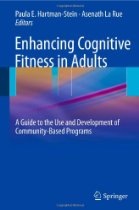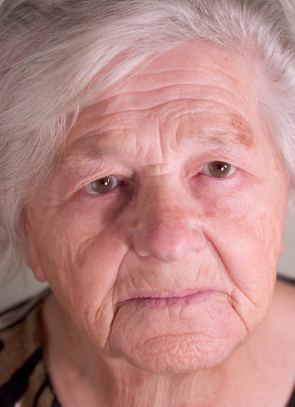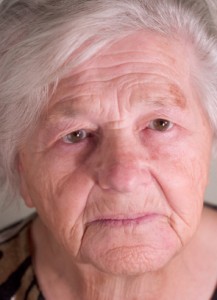Category: Resident care
Posted by Dr. El - March 26, 2013 - Business Strategies, Customer service, Dementia, McKnight's Long-Term Care News, Resident care


Here’s my latest column at McKnight’s Long-Term Care News:
Secrets to making your environment ’emotionally healing’
Back when I worked in psych, one of our most effective tools to improve mental health was maintaining a healing emotional environment, or therapeutic milieu. That’s why I was shocked when I first entered long-term care.
I couldn’t believe the din that faced me on the floors or the way some people spoke to the residents or the lack of coordination of care. In some ways, the settings are so similar —inpatient care, short- and long-term stays, family involvement, treatment teams, etc. — but the focus on physical versus mental health creates completely different atmospheres.
The reality is that even though our residents are entering LTC due to physical problems, their medical troubles impact their mental health and vice versa.

Posted by Dr. El - March 12, 2013 - Common Nursing Home Problems and How Psychologists Can Solve Them, Depression/Mental illness/Substance Abuse, McKnight's Long-Term Care News, Resident care, Role of psychologists

I’m very pleased to announce the debut of my new column at McKnight’s Long-Term Care News. The World According to Dr. El is a twice monthly column that will address mental health issues in LTC.
Please visit and “Like” the page on McKnight’s to show your support for addressing the mental health concerns of all those involved with LTC.

Inside the mind of an LTC shrink
I sat in morning report as the nursing supervisor announced the arrival of a new resident. An 80-year old woman was taken to the hospital after a fall at home, where she received a below-knee amputation and contracted C. diff before being transferred to our facility.
I looked around the room and speculated about what each of my team members were thinking, imagining thought bubbles over their heads:
- The wound care nurse was wondering how the leg was healing.
- The rehab director was considering the chances an 80-year old woman might be able to manage on a prosthetic leg.
- The infection control specialist was mentally reviewing a checklist of infection control procedures that needed to be put in place.
- The social worker was hoping the woman lived in a ground-floor apartment.
What was I thinking about this new admission? I was worried she might be suffering from symptoms of Post-Traumatic Stress Disorder if she had been alone on the floor for any length of time after her fall.
I pondered how she might be handling the assault on her femininity of losing a leg. I wondered about the quality of her family supports and whether she’d consider attending the choir performance where one of the soloists was a glamorous amputee from the third floor.
Posted by Dr. El - January 11, 2013 - Books/media of note, Resident care


These days the recreation calendar of most long-term care facilities has moved way beyond the bingo-heavy schedule of yesteryear. Residents are likely to find live music, current events, religious programs, pet therapy, crafts, Wii sports, and trivia games among their options. This abundance of choices makes it likely that residents will find enjoyable ways to spend their time and some of these activities (including bingo) help to keep the mind sharp. Staff members interested in “kicking it up a notch” and creating programs specifically focused on enhancing cognitive capacity will find a roadmap in this resource, Enhancing Cognitive Fitness in Adults: A Guide to the Use and Development of Community-Based Programs, edited by psychologists Paula E. Hartman-Stein and Asenath LaRue. The book “will highlight the research foundations behind brain fitness interventions as well as showcase innovative community-based programs to maintain and promote mental fitness and intervene with adults with cognitive impairment. The emphasis is on illustrating the nuts and bolts of setting up and utilizing cognitive health programs in the community, not just the laboratory.” The book includes chapters on oral life review, intergenerational groups, incorporating the arts, and Montessori-based methods for engaging persons with dementia. Part Five of the book, Gaining Through Giving Back: Programs with a Positive Societal Impact, outlines ways of improving quality of life for residents by helping them give back to the community — a concept near and dear to my heart.
On another note, Editor Paula Hartman-Stein, below, is offering two workshops for psychologists and social workers interested in learning more about the Physician Quality Reporting System (PQRS). Visit her website at Center for Healthy Aging for more information.

Posted by Dr. El - October 2, 2012 - Business Strategies, Communication, Customer service, Long-Term Living Magazine, Resident care, Resident education/Support groups

 Here’s my latest article on Long-Term Living magazine online:
Here’s my latest article on Long-Term Living magazine online:
“Thanks, Doc, for telling me about this group!” Mr. Jones smiled and held up the magazine he’d gotten from the National Parkinson Foundation. “Except for that actor, I didn’t even know one person with Parkinson’s before I got my diagnosis—now I find out there are enough of them to have a whole Foundation!”“You feel better knowing you’re not alone,” the psychologist reflected.“Not only that,” he said, “but I’m learning a lot about Parkinson’s and how to handle it. I used to get so angry when I couldn’t do the things I used to do, but now I see it’s my illness. I’m gonna figure out how to deal with it,” he said with conviction.Like Mr. Jones, many residents enter long-term care with medical illnesses that are unfamiliar to them, sometimes years after their diagnoses. As discussed in the article 5 Reasons to Educate Residents About Their Illnesses, not only are properly educated residents more compliant with healthcare recommendations, but the coming baby boomers are going to demand information about their illnesses. Nursing homes that provide education for residents (and families) will be offering cutting-edge services that enhance the experience of their facilities and increase customer satisfaction.Here are seven simple methods to educate residents that are easy to implement and will help your facility stand apart from the crowd:
- Encourage discussion with medical staff upon admission and diagnosis. Part of the initial assessment of new residents should include asking them whether or not they know what their diagnoses are. Nurses and doctors can offer a brief explanation of unfamiliar terms and assess the need for more information, the length of time since diagnosis (the more recent the diagnosis, the more likely the resident will be in emotional distress and may benefit from mental health support), and the level of family involvement (involved family may need information too). Any new diagnoses after admission should be discussed with the physician and followed up as needed.
- Dispense fact sheets about illnesses. Every illness is Google-able. Chances are that your boomer residents and/or their family members will be researching their illnesses on their smartphones or laptops, but the details they’re obtaining may not be from reputable sources. By providing information from established medical sites, staff can direct residents to credible resources. The staff members also will have easy access to the information and can familiarize themselves with the illnesses and required care. Fact sheets could be in a binder available at the nursing stations for the staff to distribute or in a magazine rack accessible to the residents and visitors.
- Provide information about illness organizations and how they can join. Along with the basic details an illness fact sheet provides, residents can be offered information about disease-specific organizations. The mere knowledge of the existence of such groups can be helpful, since many residents feel alone with their illnesses, despite the fact that they may be sitting in the hallway next to another resident with the same disease. Privacy laws prevent staff members from sharing such similarities, and residents might not feel comfortable discussing their physical concerns with a neighbor on their floor. Illness-related societies can offer support, coping strategies, hope and perspectives that others are unable to provide. Joining such organizations can be an important step in regaining a sense of control over one’s life.
For more, visit LTL magazine online:
____________________
Now available on Amazon:
Everything You Wanted to Know About Your Nursing Home Stay
But Were Afraid to Ask
Posted by Dr. El - September 19, 2012 - Books/media of note, Customer service, Resident care
Maybe it’s because I live in the New York metropolitan area, but it seems every nursing home I’ve worked in is filled with residents and staff from all over the world. I find it an exciting environment with the opportunity to learn about different cultures at every turn. Somehow, despite our differences, we make it work and provide top-notch care for our residents. Unless they’re gay. Or lesbian, bisexual, or transgendered (LGBT). Then many LGBT residents, no matter what country they hail from, feel they need to go back into the closet and hide who they are from those caring for them. They fear the prejudice of staff members and rightly so, based on a number of conversations I’ve had with co-workers about the issue. According to The Aging and Health Report released by The National LGBT Health and Aging Center, 21% of LGBT seniors do not disclose their sexual or gender identity to their physician. Their physician.
If you’re looking for resources to address LGBT issues in LTC, consider showing your staff the award-winning hour-long documentary Gen Silent or using one of their training programs. I had the opportunity to view the film at the American Psychological Association conference last month and think it would make an excellent tool for addressing sexual diversity. Given the strong feelings many staff members have on homosexuality, a training program is likely to be more helpful than an open discussion of the issues. As a psychologist privy to the private concerns of residents, I can tell you that you do have LGBT residents within your facilities — you just might not know who they are.
Posted by Dr. El - August 21, 2012 - Business Strategies, Communication, Customer service, Long-Term Living Magazine, Medication issues, Resident care, Resident education/Support groups


Here’s my latest article in Long-Term Living Magazine online:
5 reasons to educate residents about their illnesses
“How long have you had Parkinson’s?” the psychologist asked Mr. Jones during his initial evaluation.
“They just told me the diagnosis when I got here last week, but I suppose I’ve had it for a while.” He said it casually, but his hands were clenched and his voice held a note of tension.
“Did the doctor explain what it is or give you information about the Parkinson’s Foundation?”
“No. All I know is that it’s the same disease that young actor has—what’s his name?”
“Michael J. Fox.”
“Yeah, that’s the one.”
The psychologist assured the resident she’d bring him a pamphlet from the Parkinson’s Foundation the following week. It would work better, she thought to herself, if the medical staff provided the physical health information so she could follow up with the mental health aspects.
Residents often enter long-term care with surprisingly little knowledge about their conditions, whether they have a recent diagnosis or have been living with an illness for many years. This lack of information isn’t good for residents, families or facility staff.
Here are five reasons why we should teach our residents about the illnesses they live with:
1. Education leads to more active resident involvement in care.
When residents have information about their illnesses, they are more able to accurately report their symptoms to the medical team and to provide the type of information that improves treatment. A resident without knowledge is a passive recipient of medication and care; a resident with knowledge can partner with his or her medical team to address needs and find effective solutions. Joan, for instance, had multiple sclerosis and was keenly aware that the hot summer made it difficult for her to walk in rehab. She was able to work with her therapist to find more manageable activities so that she could continue with her rehab program during the summer months. Contrast this with Leon, who blamed himself for his MS symptoms, believed his difficulty walking was a personal failure, and was referred for psychotherapy when he stopped attending rehab. With encouragement and some psychoeducation about his illness, Leon was literally able to get back on his feet again.
2. Knowledge increases compliance.
Uneducated individuals are less likely to comply with treatment recommendations or may reject medications due to side effects without fully considering potential benefits. Individuals who understand why particular medications are given and how to cope with potential side effects are more likely to comply with treatment. They’re also more likely to have reasonable, informed objections for foregoing a particular course of treatment—reasons that can be readily understood and documented. For example, Lucille was initially resistant to the dialysis treatments that were recommended for her. Once she gathered information and spoke to some other residents in the dialysis program, she ultimately decided that its life-saving benefits were worth the time and discomfort of the treatments. Thomas, on the other hand, decided against dialysis and was able to explain and document his end-of-life wishes clearly, based on his knowledge of his illness.
3. Information reduces anxiety.
Posted by Dr. El - July 26, 2012 - Common Nursing Home Problems and How Psychologists Can Solve Them, Depression/Mental illness/Substance Abuse, Resident care, Role of psychologists


The New York Times New Old Age blog has an interesting, hopeful article by Paula Span regarding treatment for depression in older adults. Regarding the stigma of psychotherapy the article mentions, I’ve found nursing home residents to be very receptive to my visits, especially when I phrase my help as “extra support during a stressful time.” Everyone agrees that entering a nursing home is stressful. (See my earlier post, The Stress of Nursing Home Admission, for more on this.) Occasionally, when someone is resistant but I can tell they need me, we postpone the decision to officially start psychological services and I tell them I’ll “just stop by next week to see how things are going.” Nine times out of ten, they’re glad to see me and appreciative that I showed up when I said I would.
Here’s the start to the New Old Age post; click on the title below to read the whole article:
Anna Hill’s mother-in-law had suffered from depression for years, it was clear in hindsight, and had denied it for years, too. Only 73, she’d lost interest in doing much of anything. In chronic pain after an earlier accident, she was taking high doses of methadone. Last November, she stunned her family by declining, at the eleventh hour, to come to Thanksgiving dinner.
“I’d only seen her in a nightgown for a year straight,” said Ms. Hill, 42, an accountant in Atlanta. “She was just rotting away in bed, watching TV and taking methadone.”
Depression in the elderly is a mixed picture these days.
For years, mental health specialists lamented that depression was seriously underdiagnosed and undertreated in the elderly. Laypeople saw it not as a disease but as an inevitable part of aging. Doctors missed it because depression didn’t always look the way it did in younger patients — less sadness and weepiness, more physical symptoms and disengagement. Older people themselves often rejected help because mental illness carried a stigma.
In primary care practices, Dr. Jürgen Unützer and colleagues found in a large study published in 2000, only 12 to 25 percent of older people with probable depression were getting a diagnosis and being treated.
Not anymore. Over the past decade, “we’ve seen a really big increase in the recognition of depression and the initiation of treatment,” said Dr. Unützer, a geriatric psychiatrist now at the University of Washington.
For more, click on title of article above.
Posted by Dr. El - July 20, 2012 - Depression/Mental illness/Substance Abuse, Resident care, Role of psychologists

 It was previously thought that seniors who are anxious about falling tend to avoid activities that could lead to falls, thus becoming de-conditioned and increasing fall risk. New research, however, suggests that anxiety about falling itself can increase fall risk. Hadjistavropoulos, T. et al. asked older adults to walk either in a low anxiety situation (on the floor) or a high anxiety situation (on an elevated platform). Those who were more anxious (measured through heart rate, self-report, etc) had a less stable gait. In addition, those who were multi-tasking by carrying a tray had a less stable gait. The self-report of anxiety about walking was predictive of balance performance — in other words, if they said they were nervous about falling, they didn’t walk as well.
It was previously thought that seniors who are anxious about falling tend to avoid activities that could lead to falls, thus becoming de-conditioned and increasing fall risk. New research, however, suggests that anxiety about falling itself can increase fall risk. Hadjistavropoulos, T. et al. asked older adults to walk either in a low anxiety situation (on the floor) or a high anxiety situation (on an elevated platform). Those who were more anxious (measured through heart rate, self-report, etc) had a less stable gait. In addition, those who were multi-tasking by carrying a tray had a less stable gait. The self-report of anxiety about walking was predictive of balance performance — in other words, if they said they were nervous about falling, they didn’t walk as well.
What does this mean for those of us working in LTC?
- We might consider formally or informally assessing the anxiety level of residents regarding their ability to walk.
- If residents appear anxious or report anxiety about falling, rehab therapists could discuss this with them or refer them for psychological services to address the issue. I frequently talk with residents about the circumstances around their falls and ways to avoid a repeat of the mishap, helping them to feel more in control and reducing anxiety.
- We can advise residents to focus on moving safely about their rooms (or homes upon discharge), rather than on carrying objects from one point to another.
Posted by Dr. El - July 11, 2012 - Anecdotes, Communication, Resident care, Role of psychologists


“How in the world am I going to chart this?” I wondered as I sat across from Nell, who filled her large wheelchair to overflowing. This was our second attempt at psychotherapy, which I’d discontinued a few months ago because I felt all my efforts had gone nowhere. Nell sat in her room all day, doing nothing and talking to no one, yet she was clear in her thinking and clearly depressed. She resisted all of my suggestions, recommendations, cajoling, begging, humor, and coordination with the team to adjust her medications. Efforts to connect her with her estranged family had produced a tepid response. “She’s been this way all her life,” her son told me when I’d finally called to tell him I’d stopped seeing his mom. “I’ve given up,” he added.
Now here I was, three sessions after the team had referred her for psychological services again, trying to determine a treatment strategy in the face of her extreme hopelessness.
“There’s nothing I can do,” she said, “because I can’t see.”
Her talking clock, talking watch, talking books, radio, and TV sat unused after her initial training in how to operate them.
__________________
I consulted with colleagues the next week and they encouraged me to keep going. “You’re the only person she talks to,” they said. “That has value.”
__________________
A couple of weeks later I ran into Nell’s aide in the elevator after I’d finished a staff training.
“You know she asks for you all the time, don’t you?” she said.
“She does?” I was shocked.
“You’re Eleanor, right?”
“Yes.”
“She calls ‘Eleanor, Eleanor, Eleanor’ all day long. And when she doesn’t want to take a shower, we tell her ‘Eleanor wants you to do it’ and then she goes along with it.”
“I had no idea! Thank you for telling me that.” I was flabbergasted — and relieved that my documentation could reflect some actual purpose and progress.
___________________
The next week I sat across from Nell with a lighter spirit.
“There’s nothing I can do,” she said, “now that I’ve lost my eyesight.”
“That must be a huge loss for you,” I replied.
Posted by Dr. El - May 4, 2012 - Bullying/Senior bullying, Resident care

Potential Individual-Level Interventions to Reduce Bullying Among Seniors: Strategies for the Targets of Bullying
By Robin Bonifas, PhD, MSW, Assistant Professor, School of Social Work, Arizona State University, Phoenix, AZ and Marsha Frankel, LICSW, Clinical Director of Senior Services, Jewish Family & Children’s Service, Boston, MA
Welcome to our final blog addressing issues of bullying among older adults. This time we are covering how to help individuals who are the targets of bullying.
Readers will recall from blog 2 Who bullies and who gets bullied? that individuals who fall victim to bullies typically have trouble defending themselves. They do nothing to “cause” the bullying, but passive social interaction styles make them ideal targets for bullies to overpower and control.
Readers will also recall that there are two types of bullying victims, those who are passive and those who are provocative.
Passive victims tend to show a lot of emotion, are often anxious, and typically do not read social cues well. Others often perceive these individuals as shy and insecure. Among older adults, such victims may have early dementia or a developmental disorder. Sadly, minority status based on race, ethnicity, or perceived sexual orientation can also contribute to individuals being targeted for bullying because individuals who bully have difficulty tolerating individual differences.
On the other hand, provocative victims can be annoying or irritating to others, such as by intruding into others’ personal space. They are often perceived as quick-tempered and may inadvertently “egg” bullies on. Among older adults, such individuals may have a dementia-related condition that is more advanced than that of passive victims.
It is helpful to keep the above characteristics of bullying victims in mind when devising interventions to help minimize bullying. It is also critical to understand that individuals with dementia who are bullied require different interventions than individuals who do not have dementia. As readers are well aware, dementia impairs cognition and individuals in the middle stages of dementia are not able to learn new skills. Thus, intervention cannot be based on teaching these individuals how to deal with bullies. Rather, the facility staff and the environment have to fill that gap: staff members need to monitor individuals and redirect them from harm’s way. Environmental modifications can, of course, ease the staff’s burden somewhat, for example, using visual barriers that prevent wanderers from entering into others’ rooms. The interventions below are for intended for individuals who are targeted by bullies and have sufficient cognitive abilities to learn new skills.
Bullying victims can be helped by learning ways to prevent others from dominating them. Assertiveness training is a best practice approach for gaining such abilities and emphasizes the following:
- Standing up for one’s rights
- Seeking respect and understanding of one’s feelings regarding the impact of the bully’s behavior
- Managing feelings of anger
- Using direct communication strategies
- Using “I” statements
- Setting boundaries
- Creating win-win situations
Individuals who are learning assertiveness skills can initially have some difficulty differentiating assertive behavior from aggressive behavior, so it is important to really help individuals understand the difference. If this distinction isn’t clear, victims can become “victim bullies” – people who are the targets of bullying, but also bully others in return. Teaching targets to make “I” statements, as noted above, is a useful strategy to both practice assertiveness and emphasize how it is different from aggressiveness. For example, in learning how to tell a bully about the impact of his or her behavior, victims might take aggressive statements like “You make me so mad” and “You are such insensitive person” and reconstruct them into assertive statements: “When you raise your voice at the table during mealtime, I have difficulty enjoying my meal” and “When you imitate the way I talk, I feel angry and embarrassed.”
Molly Nece has a series of U-Tube videos that readers may find helpful in learning strategies to teach assertiveness skills:
The Art of Assertiveness: Part 1
http://www.youtube.com/watch?v=DfpVNOHwxUo&feature=related
The Art of Assertiveness: Part 2
http://www.youtube.com/watch?v=bos11sak9AQ&feature=relmfu
The Art of Assertiveness: Part 3
http://www.youtube.com/watch?v=yEroRY2L3xM&feature=relmfu
The Art of Assertiveness: Part 4
http://www.youtube.com/watch?v=nE02WlNwf9E&feature=relmfu
The Art of Assertiveness: Part 5
http://www.youtube.com/watch?v=nOgU9n1nMnE&feature=relmfu
In closing, given that individuals who are targeted by bullies often have low self-esteem and negative self regard, it is important to foster their self worth and dignity. This is true regardless of whether the individual has dementia or not! Make special efforts to notice and comment on the individual’s strengths and showcase those strengths to others as appropriate. Involve them in activities and projects that provide a sense of accomplishment. Assure that they are able to get to the barber or beauty shop, have their nails done, beard trimmed – all those little things that help people feel good about themselves.
In summary, this series of blogs has covered several aspects related to bullying among older adults, including what bullying is, the types of behaviors that tend to occur, and the characteristics of bullies and individuals who are the targets of bullying. The last few blogs have presented our three-tier intervention model that emphasizes strategies to prevent and minimize bullying at the organizational level, the bully level, and the victim level. It has been great communicating with our readers and sharing our learning about senior bullying with you!

Robin Bonifas, PhD, MSW

Marsha Frankel, LICSW
The Senior Bullying Series:
Reducing Senior Bullying: Conversation with Bullying Expert Robin Bonifas, PhD, MSW
This 50-minute audio addresses how organizations can implement programs to reduce senior bullying, discussing in detail issues touched upon in Dr. Bonifas’ blog series on Senior Bullying. Listeners will learn:
How to discover the extent of senior bullying in your facility
Who should be involved in a task force to reduce senior bullying
How to distinguish between bullying and the problematic behavior of residents with dementia
Ways to create a positive environment that encourages caring behavior and thus reduces bullying
Instant Download: Only $10.99











 Here’s my latest article on Long-Term Living magazine online:
Here’s my latest article on Long-Term Living magazine online:



 It was previously thought that seniors who are anxious about falling tend to avoid activities that could lead to falls, thus becoming de-conditioned and increasing fall risk. New research, however, suggests that anxiety about falling itself can increase fall risk.
It was previously thought that seniors who are anxious about falling tend to avoid activities that could lead to falls, thus becoming de-conditioned and increasing fall risk. New research, however, suggests that anxiety about falling itself can increase fall risk. 



